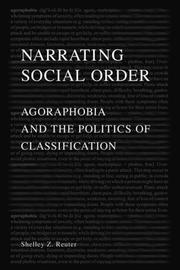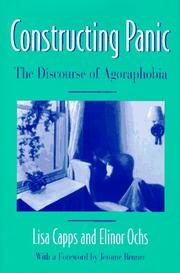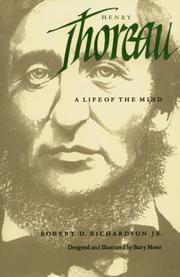| Listing 1 - 10 of 16 | << page >> |
Sort by
|
Book
ISBN: 3631638809 3653035155 Year: 2013 Publisher: Bern Peter Lang International Academic Publishing Group
Abstract | Keywords | Export | Availability | Bookmark
 Loading...
Loading...Choose an application
- Reference Manager
- EndNote
- RefWorks (Direct export to RefWorks)
To expand existing literature on loyalty schemes, the impact of stand-alone vs. multi-partner programs on customer loyalty was evaluated. In addition, the effects of store satisfaction, membership in competing programs, as well as various shopper characteristics were tested. Therefore, interviews were conducted with loyalty executives and a survey was carried out with 1,150 German customers of two fuel station chains. Stand-alone programs were found to outperform multi-partner schemes in their ability to trigger behavioral loyalty (e.g. share-of-wallet), attitudinal loyalty, and positive word-
Customer loyalty. --- Consumer satisfaction. --- Retail trade. --- Retail industry --- Retailing --- Commerce --- Marketing --- Shopping centers --- Wholesale trade --- Customer satisfaction --- Satisfaction --- Brand loyalty --- Customer loyalty --- Frequent buyer programs --- Frequent shopper programs --- Consumer behavior --- Loyalty --- Consumer satisfaction --- alone --- Comparison --- Hoffmann --- Kundenbindungsprogramme --- loyalty Schemes --- Multi --- Multi-Partner-Program --- partner --- Programs --- Schemes --- Stand --- Stand-alone-Program
Book
ISBN: 2763708404 1459338219 1441638938 9781441638939 2763788408 9782763788401 9782763708409 9782763788401 Year: 2009 Publisher: Québec, [Canada] : Les Presses de l'Université Laval,
Abstract | Keywords | Export | Availability | Bookmark
 Loading...
Loading...Choose an application
- Reference Manager
- EndNote
- RefWorks (Direct export to RefWorks)
Single people --- People, Single --- People, Unmarried --- Persons, Single --- Persons, Unmarried --- Single persons --- Singles (Persons) --- Unmarried people --- Unmarried persons --- Marital status --- Social conditions. --- Living alone --- Lifestyles --- Vivre seul --- Personnes seules --- Style de vie
Book
ISBN: 0191740268 0191004251 9780191004254 1306300436 9781306300438 019100426X Year: 2014 Publisher: Oxford, [England] : Oxford University Press,
Abstract | Keywords | Export | Availability | Bookmark
 Loading...
Loading...Choose an application
- Reference Manager
- EndNote
- RefWorks (Direct export to RefWorks)
Panic disorder is characterized by sudden, unexpected attacks of intense fear and anticipatory anxiety. Panic attacks include symptoms such as palpitations, dyspnoea, dizziness, trembling, gastrointestinal discomfort and fear of dying. Therefore, patients with panic disorder often assume physical illnesses may underly their symptoms. They frequently consult psychiatrists and psychologists, but also general practitioners, cardiologists, neurologists and other medical specialists. Part of the Oxford Psychiatry Library series, this pocketbook will serve as a concise and practical manual for the m
Panic disorders --- Panic attacks --- Agoraphobia --- Fear of being alone --- Fear of open space --- Fear of open spaces --- Isolation, Fear of --- Open space, Fear of --- Open spaces, Fear of --- Phobias --- Spatial behavior --- Anxiety attacks --- Attacks, Panic --- Panic (Psychology) --- Fear --- Diagnosis. --- Treatment.
Book
ISBN: 0674259947 0674259955 Year: 2021 Publisher: Cambridge, Massachusetts ; London, England : Harvard University Press,
Abstract | Keywords | Export | Availability | Bookmark
 Loading...
Loading...Choose an application
- Reference Manager
- EndNote
- RefWorks (Direct export to RefWorks)
"Are we alone in the universe? It is a captivating question, but one that historically eluded proper scientific investigation. The new discipline of astrobiology changes the game, introducing rigor to the quest for extraterrestrial life. Life in the Cosmos surveys the field, showing how cutting-edge research is closing in on the answers "out there.""--
Exobiology. --- Habitable planets. --- Life --- Life on other planets. --- Origin. --- Abiogenesis. --- Animal Cognition. --- Are We Alone?. --- Astrobiology. --- Biosignatures. --- Breakthrough Starshot. --- Brown Dwarfs. --- Definitions of Life. --- Drake Equation. --- Enceladus. --- Europa. --- Exoplanets. --- Extraterrestrial Intelligence. --- Extraterrestrial Life. --- Extremophiles.

ISBN: 1442684658 9781442684652 9780802090881 0802090885 0802085571 Year: 2007 Publisher: Toronto : University of Toronto Press,
Abstract | Keywords | Export | Availability | Bookmark
 Loading...
Loading...Choose an application
- Reference Manager
- EndNote
- RefWorks (Direct export to RefWorks)
Agoraphobia, the fear of open spaces, has received minimal attention from sociologists. Yet implicit within psychiatric discussion of this disease is a normative account of society, social order, social ordering, and power relations, making agoraphobia an excellent candidate for sociological interpretation. Narrating Social Order provides the first critical sociological framework for understanding agoraphobia, as well as the issue of psychiatric classification more generally.Shelley Z. Reuter explores three major themes in her analysis: agoraphobia in the context of gender, race, and class; the shift in recent decades from an emphasis on psychoanalytic explanations for mental diseases to an emphasis on strictly biogenic explanations; and, finally, embodiment as a process that occurs in and through disease categories. Reuter provides a close reading of reports of agoraphobia beginning with the first official cases, along with the DSM and its precursors, illustrating how a ?psychiatric narrative? is contained within this clinical discourse. She argues that, while the disease embodies very real physiological and emotional experiences of suffering, implicit in this fluid and shifting discourse are socio-cultural assumptions. These assumptions, and especially the question of what it means, both medically and culturally, to be ?normal? and ?pathological,? demonstrate the overlap between the psychiatric narrative of agoraphobia and socio-cultural narratives of exclusion. Ultimately, Reuter seeks to confront the gap that exists between sociological and psychiatric conceptions of mental disease and to understand the relationship between biomedical and cultural knowledges.
Agoraphobia. --- Mental illness --- Social psychiatry. --- Agoraphobie. --- Maladies mentales --- Psychiatrie sociale. --- Psychiatry, Social --- Clinical sociology --- Mental health --- Psychiatry --- Social medicine --- Social psychology --- Psychology, Pathological --- Nosology --- Fear of being alone --- Fear of open space --- Fear of open spaces --- Isolation, Fear of --- Open space, Fear of --- Open spaces, Fear of --- Panic disorders --- Phobias --- Spatial behavior --- Classification. --- Agoraphobie --- Psychiatrie sociale --- Classification
Book
ISBN: 1351880225 1315236494 1282054279 9786612054273 0754693074 0754655768 1351880217 9781351880213 Year: 2009 Publisher: Aldershot, Hants, England ; Burlington, VT : Ashgate,
Abstract | Keywords | Export | Availability | Bookmark
 Loading...
Loading...Choose an application
- Reference Manager
- EndNote
- RefWorks (Direct export to RefWorks)
Highly respected as a writer by her contemporaries, Hesba Stretton (1832-1911) was a vigorous campaigner for the rights of oppressed minorities and a founding member of the London Society for the Prevention of Cruelty to Children. Mining nineteenth-century periodicals and archival materials, Elaine Lomax explores the intersection of cultural and literary representations of the child with wider images of the colonized or excluded, and advances our understanding of the development of juvenile literature and women's writing.
Women authors, English --- Children's literature --- Literature and society --- Social reformers --- Children in literature. --- English women authors --- Childhood in literature --- Children in poetry --- Reformers --- Authorship. --- History --- Stretton, Hesba, --- Smith, Sarah, --- Author of Fern's Hollow, --- Author of Jessica's first prayer, --- Author of The children of Lake Huron, --- Author of Little Meg's children, --- Author of Nelly's dark days, --- Author of Enoch Roden's training, --- Author of Max Kromer, --- Author of Pilgrim Street, --- Author of Alone in London, --- Author of The children of Cloverly, --- Author of Bede's charity, --- Fern's Hollow, Author of, --- Jessica's first prayer, Author of, --- Children of Lake Huron, Author of, --- Little Meg's children, Author of, --- Nelly's dark days, Author of, --- Enoch Roden's training, Author of, --- Max Kromer, Author of, --- Pilgrim Street, Author of, --- Alone in London, Author of, --- Children of Cloverly, Author of, --- Bede's charity, Author of, --- Criticism and interpretation.

ISBN: 0674029186 9780674029187 0674165489 9780674165489 9780674165496 0674262492 0674165497 9780674262492 Year: 1995 Publisher: Harvard University Press
Abstract | Keywords | Export | Availability | Bookmark
 Loading...
Loading...Choose an application
- Reference Manager
- EndNote
- RefWorks (Direct export to RefWorks)
Meg Logan has not been farther than two miles from home in six years. She has agoraphobia, a debilitating anxiety disorder that entraps its sufferers in the fear of leaving safe havens such as home. Paradoxically, while at this safe haven, agoraphobics spend much of their time ruminating over past panic experiences and imagining similar hypothetical situations. In doing so, they create a narrative that both describes their experience and locks them into it. Constructing Panic offers an unprecedented analysis of one patient's experience of agoraphobia. In this novel interdisciplinary collaboration between a clinical psychologist and a linguist, the authors probe Meg's stories for constructions of emotions, actions, and events. They illustrate how Meg uses grammar and narrative structure to create and recreate emotional experiences that maintain her agoraphobic identity. In this work Capps and Ochs propose a startling new view of agoraphobia as a communicative disorder. Constructing Panic opens up the largely overlooked potential for linguistic and narrative analysis by revealing the roots of panic and by offering a unique framework for therapeutic intervention. Readers will find in these pages hope for managing panic through careful attention to how we tell the story of our lives.
Agoraphobia --- Personal construct theory. --- Discourse analysis. --- Discourse analysis, Narrative. --- Panic attacks. --- Anxiety attacks --- Attacks, Panic --- Panic (Psychology) --- Fear --- Panic disorders --- Narrative discourse analysis --- Narration (Rhetoric) --- Discourse grammar --- Text grammar --- Semantics --- Semiotics --- Personal construct psychology --- Personality --- Psychology --- Repertory grid technique --- Fear of being alone --- Fear of open space --- Fear of open spaces --- Isolation, Fear of --- Open space, Fear of --- Open spaces, Fear of --- Phobias --- Spatial behavior --- PSYCHOLOGY / Psychopathology / Anxieties & Phobias.
Book
ISBN: 9780520958456 0520958454 9781306662543 1306662540 9780520277656 0520277651 9780520277670 0520277678 Year: 2014 Publisher: Berkeley, CA : University of California Press,
Abstract | Keywords | Export | Availability | Bookmark
 Loading...
Loading...Choose an application
- Reference Manager
- EndNote
- RefWorks (Direct export to RefWorks)
Cut Adrift makes an important and original contribution to the national conversation about inequality and risk in American society. Set against the backdrop of rising economic insecurity and rolled-up safety nets, Marianne Cooper's probing analysis explores what keeps Americans up at night. Through poignant case studies, she reveals what families are concerned about, how they manage their anxiety, whose job it is to worry, and how social class shapes all of these dynamics, including what is even worth worrying about in the first place. This powerful study is packed with intriguing discoveries ranging from the surprising anxieties of the rich to the critical role of women in keeping struggling families afloat. Through tales of stalwart stoicism, heart-wrenching worry, marital angst, and religious conviction, Cut Adrift deepens our understanding of how families are coping in a go-it-alone age-and how the different strategies on which affluent, middle-class, and poor families rely upon not only reflect inequality, but fuel it.
Equality --- United States --- Social conditions --- Race relations. --- Race question --- age of insecurity. --- american culture. --- american society. --- american studies. --- anthropology. --- anxiety. --- case studies. --- class anxiety. --- class insecurity. --- cultural studies. --- debt. --- economic insecurity. --- family. --- financial security. --- got it alone age. --- inequality. --- marriage and family. --- marriage. --- middle class families. --- national conversation. --- poor families. --- poverty. --- religion. --- rich. --- risk. --- safety nets. --- security. --- social class. --- social cost. --- sociology. --- standard of living. --- struggling families. --- wealth. --- wealthy families.
Book
ISBN: 3039280074 3039280066 Year: 2019 Publisher: MDPI - Multidisciplinary Digital Publishing Institute
Abstract | Keywords | Export | Availability | Bookmark
 Loading...
Loading...Choose an application
- Reference Manager
- EndNote
- RefWorks (Direct export to RefWorks)
This book comprises ten articles covering different aspects of power quality issues in microgrids and distributed generation (DG) systems, including 1) Detection and estimation of power quality; 2) Modeling; 3) Harmonic control for DG systems and microgrids; 4) Stability improvements for microgrids. Different power quality phenomena and solution were studied in the included papers, such as harmonics, resonance, frequency deviation, voltage sag, and fluctuation. From a network point of view, some papers studied the harmonic and stability issues in standalone microgrids which are more likely to cause power quality problems. Other papers discussed the power quality problems in microgrids which are weakly interconnected with the main distribution grid. In view of the published papers, there is a trend that increasingly advanced modeling, analysis, and control schemes were applied in the studies. Moreover, the latest works focus not only on single-unit problems but also multiple units or network issues. Although some of the hot topics are not included, this book covers multiple aspects of the current power quality research frontier, and represents a particularly useful reference book for frontier researchers in this field.
power quality improvement --- differential feedforward --- weak grid --- data testing --- distributed generations --- voltage-source converter --- dynamic frequency support --- coordinated control --- grid-connection/island switching process --- virtual damping --- PV generation --- virtual inertia --- autonomous microgrid --- optimal virtual resistor --- multi-inverter system --- standalone microgrid --- unscented Kalman filter --- HVDC --- voltage fluctuation --- solar photovoltaic system --- nonlinear dynamic system --- state estimation --- voltage stability --- diesel generator --- voltage control --- multi-time scale --- sliding mode control --- power system simulation --- stability analysis --- grid impedance --- modeling method --- shunt inverter --- voltage compensation --- 2nd-order lowpass filter --- virtual synchronous generator --- microgrid --- output impedance --- hybrid energy storage --- grid-connected inverter --- parameter identification --- wind farm --- frequency stability --- harmonic suppression --- current source mode (CSM) --- voltage source mode (VSM) --- stand-alone microgrid --- frequency control --- vector control --- power quality control --- grid-tied inverter --- submarine cables --- line commutated converter --- reference current compensation --- power quality --- series inverter --- impedance enhancement

ISBN: 0520908856 9780520908857 0520054954 9780520054950 0520063465 9780520063464 Year: 2015 Publisher: Berkeley, CA : University of California Press,
Abstract | Keywords | Export | Availability | Bookmark
 Loading...
Loading...Choose an application
- Reference Manager
- EndNote
- RefWorks (Direct export to RefWorks)
The two years Thoreau spent at Walden Pond and the night he spent in the Concord jail are among the most familiar features of the American intellectual landscape. In this new biography, based on a reexamination of Thoreau's manuscripts and on a retracing of his trips, Robert Richardson offers a view of Thoreau's life and achievement in their full nineteenth century context.
Authors, American --- Intellectuals --- Naturalists --- Thoreau, Henry David, --- Thoreau, Henry David --- Thoreau, Henry D. --- Toro, Genri Devid, --- Thoreau, Henry, --- Toro, Henri Dejvid, --- Thorō, Enry Deēvint, --- So-lo, --- Toro, Henri Daṿid, --- Thoreau, David Henry, --- Sorō, Henrī Deividdo, --- טהארא, הענרי דייוויד --- טהארא, הענרי דײװיד --- תורו, הנרי דוד --- תורו, הנרי דוד, --- 梭罗, --- ソロー ヘンリー・デイヴィッド, --- 19th century. --- american author. --- american history. --- biographical. --- biography. --- civil disobedience. --- concord jail. --- cultural context. --- environmentalist. --- famous author. --- historical context. --- isolation. --- life story. --- literary analysis. --- literary criticism. --- literary history. --- literature. --- living alone. --- manuscript. --- philosopher. --- philosophy. --- social distancing. --- walden pond. --- Authors, American. --- Biographies. --- Biography & autobiography; Literary. --- Intellectuals. --- Literary criticism; American ; General. --- Naturalists. --- Écrivains américains --- Biography --- United States. --- Biographies --- 19e siècle --- United States --- Biography. --- Thoreau, Henry David 1817-1862
| Listing 1 - 10 of 16 | << page >> |
Sort by
|

 Search
Search Feedback
Feedback About UniCat
About UniCat  Help
Help News
News